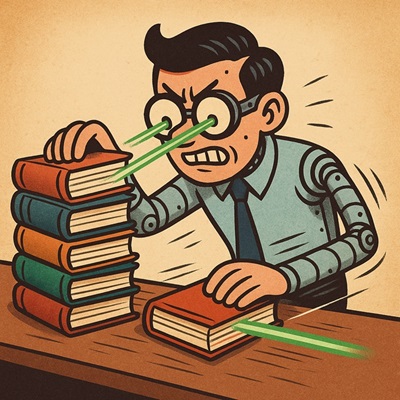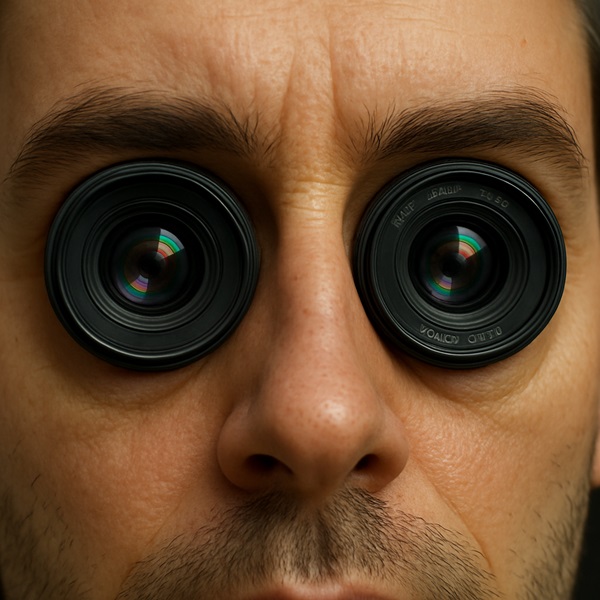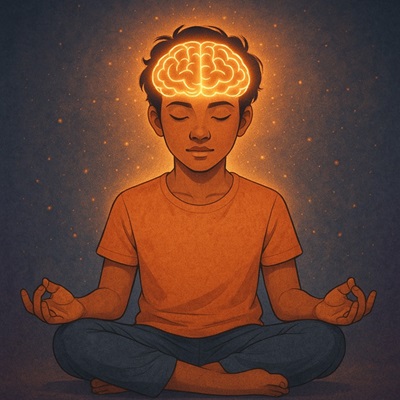The Two Cup Manifestation Method and Reality Shift – Fact Check
One of the intriguing concepts that has recently garnered significant attention is the Two Cup Method manifestation technique based on the law of attraction. This method has gained popularity across various online platforms, including TikTok and Reddit, and has particularly captivated the interest of younger individuals. Here, I will be going into the details of this technique, provide steps to perform it, and answer the question regarding its effectiveness.
I am genuinely astonished by the trends that are gaining popularity in today’s world, particularly among the younger generation, who sometimes readily embrace ideas they encounter on social media. Manifestation and the understanding of universal laws are akin to skills that require years of dedicated practice and comprehension. Regrettably, it appears that people are increasingly drawn toward seemingly magical quick-fix solutions in our present times.
No, I am not saying that quick manifestations cannot happen nor am I suggesting that using any such methods is a waste of time. But it is necessary to understand that when the concepts of personal development, metaphysics, and the art of deliberate creation are misunderstood by people, they either strongly oppose these ideas or become deeply entrenched in impractical beliefs, such as the phenomenon of reality shifting. Continue reading
20 Positive Traits of Emotionally Healthy People
So, what do you think defines emotional well-being? Can you spot it in someone’s behavior or evaluate yourself for signs of emotional health traits that might affect your overall life satisfaction? Seeing something wrong in others is easy, especially in this world where, during this age of AI and information availability, there does not need to be a psychologist to make a list of what is wrong with others, nor does one have to be a spiritually wise person to spot characteristics of emotional problems in others. So, it will be very easy to read this post by keeping people in mind to analyze their behavior and judge.
But instead of that, this post is intended for self-analysis so that a person could take necessary actions by knowing their own state of emotional well-being in order to strive to be more joyful and full of life by understanding the characteristics of emotionally healthy people and the qualities of a healthy person.
You may already have some notions about the indicators of a person’s mental state. Nevertheless, it’s crucial to remember that our understanding of our own inner state and our perception of others’ emotional well-being can fluctuate based on our current emotions. When we’re feeling happy, we tend to believe our emotional health is in great shape, and people around us seem pleasant. However, this perspective can change when we’re grappling with intense negative emotions. Therefore, before we dive deeper into this subject, let’s first clarify what it truly means to be emotionally healthy. This way, we can engage in a more meaningful discussion about the characteristics of emotionally healthy people and the qualities of a healthy person.
The True Meaning of Emotional Wellness
The concept of a happy person is essentially a mental construct disconnected from reality. It’s a notion we develop based on our individual needs and the associations we make with our happiness.
This idea of a “happy person” is a constantly shifting image unique to each individual on the planet. So, whatever idea you have at the moment that describes a “happy person” for you is subjective and something that is inconsistent with other people’s idea of the same, and in fact, it will change for you over time as well.
Some might believe this only pertains to our conception of happiness rooted in materialistic needs and desires. Nevertheless, the reality is that striving to become a happy person is, in essence, a pursuit akin to chasing clouds.
It’s important to clarify that when I refer to “emotional wellness,” I’m not talking about a state of perpetual joy. Instead, it pertains to a quality that enables a person to find inner peace and harmony with their own existence and the world around them. Understanding emotional wellness and the characteristics of emotionally healthy people helps us go beyond temporary emotions and look at deeper emotional health traits.
A happy person experiences temporary bursts of euphoria often linked to external events, whereas an emotionally healthy individual is less influenced by people, circumstances, and situations. The greater a person’s capacity to protect their inner peace, the stronger their emotional well-being becomes. I’m discussing genuine detachment, not mere pretense.
20 Qualities of an Ideal Emotional Health
These emotional health traits and characteristics of emotionally healthy people aren’t to judge yourself harshly, but to reflect on areas for growth. Building inner peace and resilience comes gradually through awareness and practice.
1. Full Responsibility: Those who safeguard their emotional well-being embrace full responsibility for their life circumstances, refraining from blaming others, society, government, or God for what unfolds in their lives. Accountability is what gives a person control over their life and is among the most powerful characteristics of a healthy person. Confident smiling person surrounded by a protective aura, symbolizing emotional health traits and the ability to stay joyful despite negative opinions of others.
2. Open-Mindedness: One common sign of emotional weakness is struggling to transcend old beliefs and being open to new ideas. Breaking the barrier of limiting beliefs is empowering and can lead to meaningful change—a key emotional health trait.
3. No Need to Be Right: A content and emotionally healthy person understands that beliefs evolve over time, so there’s no constant need to prove themselves right.
4. Unaffected by the Opinions of Others: When you have nothing to defend because you’re not obsessed with being right, others lose their power over you. This immunity to criticism is another strong indicator of positive emotional health.
5. Never Get into Emotional Dramas or Power Games: As the earlier points suggest, someone with positive emotional health knows how to shield themselves from energy-draining emotional dramas. Understanding the futility of arguments and the need to prove oneself eliminates the war of opinions, keeping the mind free from peace-disrupting thoughts.
6. Feeling the Connection: Let’s explore spirituality here. A person with inner peace recognizes the interconnectedness of all things in the world, which reflects in how they treat everything around them with love. Such individuals can remain kind and compassionate even during life’s toughest moments—another hallmark of emotionally healthy people.
7. Comfortable in Both Crowd and Solitude: Speaking of feeling the connection, content individuals often don’t have a strong need for constant company or solitude; they can enjoy both. Many people are extroverts, constantly seeking company, while others lean towards solitude. Both extremes reflect deep emotional needs.
8. Highly Conscious and Aware: Our subconscious beliefs often trigger unconscious reactions in challenging situations, leading to mistakes. Being aware of one’s inner workings helps avoid such reactions—a key attribute of emotional well-being and improved self-control.
9. A Good Listener and Communicator: Failing to openly express one’s thoughts or actively listen to others reflects the extent to which our minds and their habits have taken control. Conversely, individuals who practice mindful communication and listen with full presence demonstrate mastery over their thoughts. They engage in authentic conversations without attempting to manipulate others through words or premeditated responses.
10. Healthy Relationships: Content individuals build bonds rooted in love, while relationships founded on needs tend to create problems for both themselves and others. Whether it’s with one’s spouse, parents, children, siblings, or friends, strengthening those bonds occurs when you don’t depend on others to conform to your expectations.
11. Unstoppable by Fear: Everyone grapples with fear, but a serene mind provides the self-confidence to act despite the fears that shackle us and induce indecision. Most fears in a person’s life are somehow linked to change, and no progress can be achieved if these fears imprison us in our current life situation.
12. Perseverance: Internal strength empowers you to persevere in pursuing your goals even in challenging times, without succumbing to adversity. People who have less control over their minds tend to give up in difficult situations, while those with a healthy outlook on life remain optimistic.
13. Ability to Let Go: We discussed not giving up, and now we’re talking about letting go. It may appear contradictory, but it’s not. ‘Letting go’ means releasing your grip on anything that generates emotional turmoil. We often hold on to things that disrupt our peace, and sometimes, no matter how dear they are to us, letting go of the baggage that weighs us down is essential.
14. No Need for Outside Approval: Mental fitness enables a person to experience complete peace without the need for anyone’s approval. This single trait can reveal much about individuals; those who don’t seek validation from others to feel good about themselves do not relinquish their power to external influences.
15. Present Moment Awareness: Many mental afflictions stem from the habit of dwelling in the negative past or worrying about the future. Present moment awareness involves bringing one’s attention fully into the present, resulting in a positive state of mind. Those who have achieved inner serenity tend to dwell more in the present rather than fixating on the past or future. You can explore meditation or simple mindfulness exercises to cultivate this awareness.
16. Capable of Shifting Focus: In my opinion, a person can be considered emotionally fit if they have the ability to intentionally shift their focus from negative thoughts to positive ones. I say this based on my own experience and understanding of how challenging it can be to develop this particular skill. While it may be impossible to suddenly shift our focus from something distressing in intense situations, our minds often tend to run wild with negative thoughts even in less dire circumstances. That’s why this capacity to transition between mental states is a crucial indicator of inner strength.
17. Positive Self-Talk: The previous point brings to mind the concept of self-talk. We all have that inner voice that engages in various forms of self-dialogue. If one can train this inner voice to become a source of motivation and encouragement, it can help prevent inner conflicts.
18. Accept What Is: Much of human despair arises from efforts to control people and situations. Thus, a person in total harmony with their life possesses the ability to accept everything as it is, without attempting to change anything external to themselves.  It’s important to clarify that total surrender doesn’t imply a lack of effort in improving one’s life. Not attempting to change anything outside oneself means focusing on inner self-improvement before taking external actions. Once a person achieves clarity of mind, they can take inspired actions accordingly.
It’s important to clarify that total surrender doesn’t imply a lack of effort in improving one’s life. Not attempting to change anything outside oneself means focusing on inner self-improvement before taking external actions. Once a person achieves clarity of mind, they can take inspired actions accordingly.
19. Self-Love: People often misunderstand this concept. Self-love is not selfishness; it is a quality that empowers one to be strong, optimistic, and motivated. You cannot spread happiness without being a happy person, so this is a crucial attribute of emotionally healthy individuals.
20. Intuitive Decisions: Lastly, I’d like to mention a crucial factor often observed in the lives of those who possess inner peace—the ability to listen to your heart and make decisions based on intuition.
By reflecting on these emotional health traits and characteristics of a healthy person, you can gradually cultivate a life filled with inner peace, resilience, and authentic happiness.
Conclusion: Cultivating Emotional Health and Releasing Hidden Blocks
So, these are some of the traits that can tell us a lot about a person’s emotional health. These points are meant for self-analysis, as most of these qualities can only be discerned subjectively. However, it’s also essential to understand that feeling bad about not being able to fully control your mind is pointless. Although these characteristics can be nurtured through disciplining one’s thoughts, we are all ultimately human—and it’s natural to lose control over our emotions from time to time.
If you’re seeking ways to nurture your emotional well-being, I suggest trying out the Ho’oponopono technique. This simple practice uses four affirmations centered around forgiveness and love, and it has personally helped me elevate my state of mind during challenging times or when grappling with intense emotions.
Since I’ve mentioned how our subconscious beliefs deeply shape our behavior and emotions, I’d also like to share a program that helped me clear many known and unknown blocks. It’s called Christie Marie Sheldon’s Unlimited Abundance. Based on energy clearing, it supported me in breaking free from limiting beliefs so I could improve emotionally and approach life with a fresh perspective.
This post was originally published on March 31, 2016 and was last updated on July 22, 2025 to include new insights, updated resources, and links related to emotional health and subconscious mind healing.
I hope you enjoyed reading this post! Did I miss mentioning any other qualities you think are important? Feel free to drop your thoughts and share your perspective in the comments below — I’d genuinely love to hear from you. Your feedback really helps me keep improving the content here.
If you have any questions or need help with anything, don’t hesitate to reach out through the contact page — I’m always happy to connect and assist however I can.
And if you found this post helpful or inspiring, please consider sharing it on your social networks so others can benefit too. Thank you so much for being here!
Frequently Asked Questions about Emotional Health
What is emotional health in simple words?
Like physical health, a person has emotional health which pertains to a person’s well-being thought-wise and emotion-wise. Since all our actions are shaped by our thoughts and emotions, being emotionally healthy is of utmost importance.
How to know if someone is emotionally healthy?
When a person is least affected emotionally by external circumstances and acts responsively instead of reactively, they are emotionally healthy.
What are causes of bad emotional health?
It could be underlying deep conditioning based on genetics or the environment where one was raised, leading up to beliefs that do not serve well and cause emotional problems.
How to overcome emotional health problems related to limiting beliefs and mind conditioning?
Energy healing programs like Unlimited Abundance can help, or if you are more inclined to hypnotherapy then Marisa Peer’s Uncompromised Life might be useful. However, if the problem is greater than what one can actively control, then one must seek professional help.
How can I improve my emotional health daily?
Simple habits like practicing mindfulness, using positive self-talk, journaling, meditating, and focusing on gratitude can gradually strengthen your emotional well-being. You can explore some gratitude exercises to help make this part of your daily routine.
Are emotionally healthy people always happy?
No. Emotionally healthy people also feel sadness, anger, or fear, but they don’t get stuck there. They process emotions mindfully and return to a balanced state more easily.
Why is “letting go” so important for emotional health?
Letting go helps you release what no longer serves you — old grudges, limiting beliefs, or past pain. It frees mental and emotional energy, making space for new, positive experiences.
Train Your Brain: 6 Powerful Techniques to Develop Photographic Memory
Have you ever dreamed of flipping through a book and memorizing every page? While photographic memory, also known as eidetic memory, is still debated in scientific circles, many people believe in the brain’s extraordinary capacity to retain vivid mental images.

As a kid, I had seen on TV some cartoon characters and robots like “Vicky”, the small wonder, being able to read books with lightning fast speed by just looking at the pages as if they are clicking photos using their eyes as cameras and brains as storage. At that time, I did not know that someday I would stumble upon materials that are actually based on that specific subject.
So, is it possible to develop an eidetic memory?
There have been people who had the natural ability to capture exact pictures of what they are seeing in their minds—people like Kim Peek (who could read two pages at once) could remember places and information like machines. Also, there is Stephen Wiltshire who can draw huge landscapes to exact detail by looking at it just once. But there are two similarities between Kim and Stephen: they both were born with this ability and they both were autistic savants, which means that they were individuals with autistic spectrum disorder with exceptional abilities.
Although there have been many people who had eidetic memory due to their special brain structures which also resulted in disorders like autism, there also have been people who were gifted with such abilities by birth.
However, not all of us are born with a photographic memory. Many memory experts agree: you can train photographic memory with the right techniques. Just like singing or painting, memory skills can be developed through practice.
In this post, I’ll share 6 easy but powerful eidetic memory training exercises to help you enhance your mental clarity and potentially develop photographic memory with consistent effort.
Before that, I want to clarify that there is a slight difference between eidetic memory and photographic memory. The first refers to the ability to store all types of sensory information, whereas the latter is only about the memory involving visuals. But I will use these both terms interchangeably in this post.
? Is Photographic Memory Real?
Some historical figures like Nikola Tesla and Leonardo da Vinci were believed to have photographic memory. However, modern science hasn’t fully validated it as a measurable cognitive ability.
That said, don’t let skepticism stop you. Just like not everyone becomes a concert pianist, not everyone may achieve perfect photographic recall—but anyone can improve memory with the right training.
Also photographic memory is more about being able to bring information from the subconscious mind to our conscious mind. Our subconscious mind, being so powerful, can store information to accurate detail. However, our conscious mind has limited ability to process and store vast information that is not relevant to what we are doing in a moment.
? 6 Practical Exercises to Train Photographic Memory
1. ? Visualize Familiar Places

Choose a specific place for this exercise—such as your room, office, gym, or grocery store—and try to recall every minute detail of that location. However, avoid putting too much pressure on your mind.
To help with this process, you can use a notepad to jot down everything you remember. If you’re more visually inclined, you might even prefer sketching or painting the scene to capture the details.
Once you’ve visualized the place as thoroughly as you can, go there and observe it closely. Then, return and repeat the visualization process, this time adding any new details you noticed.
With consistent practice, you’ll notice a remarkable improvement in your mind’s ability to remember places vividly. Repeat this regularly to train photographic memory and sharpen your visual recall.
This exercise taps into your subconscious and strengthens eidetic visualization skills over time.
2. ? Practice Being Fully Present
Try to be more present in each moment. When you focus your attention on the here and now, your mind functions more efficiently because it’s not distracted by unnecessary or intrusive thoughts. Being fully present also heightens your awareness of the information your five senses are constantly receiving.
Bringing your focus to the present moment allows you to consciously register what’s happening, which makes it much easier to recall details later. This practice is known as mindfulness meditation, and the techniques involved in mindfulness meditation are known to strengthen sensory perception and cognitive functions by training the mind to stay fully engaged in the task at hand.
Mindfulness is a powerful gateway to mastering how to train for photographic memory.
3. ? Relive Memories with Friends
Sharing a memory with someone else gives you a valuable opportunity to actively engage in recalling past events as vividly as possible.
I personally love doing this—but the key is to treat it like a playful activity. I try to recall events in rich detail and then surprise others with the astonishing specifics I remember. It’s a fun way to exercise my memory, and it also increases the likelihood of bringing information from the subconscious mind into conscious awareness.
If you stay a bit more mindful while discussing a past event, you’ll notice your mind beginning to flash old images. Try to pay close attention to these mental visuals—they can significantly enhance your ability to recall experiences clearly and deeply.
4. ? Use the Memory Peg Technique

Turn boring memory tasks into something fun! The memory peg technique is a clever trick that turns memorization into an enjoyable task for your brain.
This method taps into your creativity by associating the item you want to remember with an interesting or vivid image.
For example, imagine you need to buy several items but don’t want to make a list. You can use this technique by creating memorable mental pictures for each item. Say one of the items is a “pen.” You might imagine a rocket-shaped pen being operated by scientists, ready to launch into space! Trust me—when you link things this way, it becomes nearly impossible to forget them.
This technique not only helps you remember things better but also exercises your imagination and strengthens your ability to visualize. Creative visualization is a powerful practice for improving memory and is also one of the most effective ways to communicate with your subconscious mind. You can learn more about how to tap into this inner power by exploring these 7 habits that help you access your subconscious mind.
5. ? The Military Flash Technique (Snapshot Memory Training)
The Military Flash Technique is a classic memory training method used to develop quick and accurate visual recall—almost like taking a mental photograph. Originally used in military training to improve rapid information retention, this method helps sharpen focus and strengthens the brain’s ability to capture and store visual information instantly.
This technique is especially useful for anyone seeking to improve eidetic memory, visual learning, or overall mental sharpness.
How to Practice the Military Flash Technique:
- Set up your environment:
- Choose a dark room where you have easy access to a light switch.
- Hold a piece of paper in front of you with something written or drawn on it—this could be a word, number, short paragraph, or even an image.
- Perform the exercise:
- Turn the light on briefly to view the paper, then immediately switch it off.
- When the room goes dark, focus on the mental image that briefly flashes in your mind.
- Try to observe as much detail as possible in that fleeting moment—letters, shapes, positions, or any distinct features.
- Refine your recall:
- After a few rounds, try to mentally reconstruct the image or text without turning the light back on.
- Challenge yourself to remember not only the content but also the structure and spacing.
- Repeat and train regularly:
- Repeat this process with different materials and increase the complexity over time.
- With consistent practice, your brain will adapt to capturing and storing visual data more effectively, leading to faster recall and sharper concentration.
This technique exercises both your visual memory and concentration, and over time, it can significantly boost your ability to absorb and recall information under pressure—just like it’s designed to do in military training scenarios.
6. ?♂️ Relax Your Mind with Meditation

Remember, when we talk about memory, we’re actually referring to a function of the subconscious mind. The act of recalling information is the process of transferring data from the subconscious to the conscious mind.
To improve our ability to recall, it’s essential to relax the conscious mind. When the mind is calm and free from distractions, it becomes much easier to access and retrieve stored memories.
One of the most effective ways to achieve this state of relaxation is through meditation. It not only quiets the conscious mind but also enhances awareness and mental clarity. If you’re new to the practice, here’s a helpful guide on what meditation is and how to do it in simple terms.
In addition to meditation, you might also benefit from practicing mindfulness exercises. These techniques help you stay present and focused, creating the right mental space for memory to emerge naturally. For a great starting point, check out these simple mindfulness exercises for beginners.
? Looking for a Complete Memory Training Program?
If you’re serious about learning how to get eidetic memory, I recommend trying Zox Pro. It’s a highly rated memory training system that focuses on image streaming, visualization, and photographic memory techniques to expand your brain’s recall power.
?♀️ Frequently Asked Questions (FAQ)
? Is it possible to develop eidetic memory?
While not scientifically proven for everyone, many people have improved their visual recall through eidetic memory training techniques.
❓ How to develop photographic memory naturally?
Use visualization, mindfulness, and creative memory methods like the peg technique. These help your brain store and retrieve images with more accuracy.
? How to train yourself to have photographic memory?
Start with simple daily exercises like visualizing places, using memory pegs, and practicing the military flash method. Over time, you’ll notice improvement.
? Can you actually train photographic memory?
Yes, with consistent practice. Your brain is like a muscle—the more you work it, the stronger your photographic recall becomes.
?Can you have photographic memory without autism?
Yes, it is absolutely possible to have a photographic memory without being on the autism spectrum. While some individuals with autism may exhibit extraordinary memory skills, having an eidetic or photographic memory is not exclusive to them. Anyone can explore eidetic memory training and learn how to develop photographic memory with consistent practice and the right techniques.
?What is the difference between eidetic memory and photographic memory?
Though often used interchangeably, there is a subtle difference:
- Eidetic memory refers to the ability to recall images, sounds, smells, and even feelings with great precision—essentially involving multiple senses.
- Photographic memory, on the other hand, is more specific to visual memory, often associated with recalling numbers, text, and detailed images as if they were “photographs” in the mind.
So, when learning how to train for photographic memory, the focus is primarily on visual recall, whereas eidetic memory involves a broader sensory experience.
✅ Final Thoughts + CTA
Whether you believe in true photographic memory or not, one thing’s for sure: your brain is capable of incredible things.
With the exercises above and a little daily effort, you’ll start to train photographic memory, sharpen your focus, and improve your ability to recall visuals in stunning detail.
? Ready to take your memory to the next level?
? Explore Zox Pro and unlock your brain’s true potential today.
I hope you enjoyed reading this post! I’d really love to hear your thoughts, so feel free to share your comments in the box below. If you have anything to add, your input is more than welcome.
You can also reach out to me directly through the contact page—I’m always happy to help with any questions or concerns you may have.
And if you found this post helpful, please consider sharing it with your friends or on your social media. It means a lot and helps spread the message further!
Tratak on a Black Dot
In this post, I will show you the steps to perform Bindu Tratak (Gazing on a black dot) meditation which is very helpful for improving concentration.
I have already discussed Mirror Tratak and Candle Tratak, and here we will see how to meditate on a small black dot drawn on a sheet and use it as an instrument to achieve better control over thoughts.
Initial Preparations

Choosing a fixed place and time for this meditation is very imperative.(you can get some good ideas for this purpose in the post Creating a Good Atmosphere for Meditation.
Select a place where you get positive feelings and make sure that one will disturb you while doing this meditation.
Draw a black dot on a blank sheet, keep the diameter of the dot about 4-6cm and then stick it on the wall in a way that the dot gets positioned right in front of your eyes when you sit to meditate. Continue reading
The Flaw of Attraction-Why the Law of Attraction Is Not Working?
When the law of attraction does not work for people, I call this error as the flaw of attraction because people often start to believe that all such concepts are untrue in such cases and the law of attraction provides them the evidence to falsify itself.
Here’s what the “Flaw” of attraction is – When the law of attraction is working to prove that there is no such thing as the law of attraction, we will call this paradox as the flaw of attraction.
It is easy to form a conclusion and it is easier to live with a victim mentality where you get to blame other people and also god for what happens to you, but when something does not work for you, the first thing you should do is to try to understand it better and check whether you made any mistakes. Continue reading
The Learning Mind of a Baby-A Blank Page Waiting for a Story
When we smile at a baby, it often elicits a joyful response in return, even if the baby is unfamiliar to us. This natural exchange of smiles underscores a simple but profound human connection. However, such spontaneous interactions are rare among adults. About seven out ten of people are hesitant to greet a stranger, primarily due to a fear of negative or dismissive responses. This reluctance is deeply rooted in a broader societal issue: a pervasive anxiety about being judged.
In today’s world, the fear of judgment can be paralyzing, leading many to avoid initiating interactions with those they do not know. This apprehension is driven by the concern that a friendly gesture might not be reciprocated, which can be disheartening and lead to feelings of rejection. The result is a diminished sense of community and a reluctance to engage with others, further isolating individuals. Addressing this fear requires fostering environments where positive social interactions are encouraged and where people are reminded of the fundamental human need for connection and mutual respect.
What Is the Difference between Self Hypnosis and Meditation?
A frequent question among those exploring the depths of their inner selves is whether meditation and self-hypnosis are essentially the same. This confusion arises from common misconceptions surrounding these practices. Both meditation and self-hypnosis involve directing focus inwardly, but they are fundamentally different in their approach and objectives.
Meditation generally aims to cultivate mindfulness and achieve a heightened state of awareness. It often involves observing thoughts and feelings without judgment, thereby fostering a sense of inner peace and clarity. The practice may include various techniques such as focused attention, breath awareness, or contemplation, with the ultimate goal of attaining a deeper connection with oneself and enhancing overall well-being.
In contrast, self-hypnosis is a process designed to enter a trance-like state where the subconscious mind becomes more receptive to suggestions. This technique is frequently used for therapeutic purposes, such as changing habits or addressing psychological issues. Unlike meditation, which is typically about observing and accepting, self-hypnosis involves actively guiding the mind toward specific goals or changes.
Therefore, while both practices involve an inward journey, meditation focuses on mindfulness and awareness, whereas self-hypnosis targets the subconscious for behavioral or emotional modification. Understanding these distinctions helps in choosing the practice that best aligns with one’s personal goals and needs.
Tratak Meditation Method
Tratak meditation is an ancient, powerful practice known for its ability to accelerate spiritual growth. Often referred to as fixed-gazing meditation, this method involves fixing your gaze on an external object, such as a candle flame or a symbol, without blinking. The goal is to sharpen your focus and use the object as a tool to observe and understand your mind’s inner workings. Over time, this technique helps you become more aware of your thoughts and mental activity.
Learn to Expand Your Consciousness with Simple Mindfulness Exercises
You can bring your mind into the present moment by engaging your five senses, and here we’ll explore simple mindfulness exercises to help you do that anytime, anywhere. Being present is key to mental clarity, peace, and manifesting desires. In the Bhagavad Gita, Lord Krishna emphasizes the importance of performing actions without attachment to results. Mindfulness is one way to cultivate this mindset and live a more balanced, fulfilling life.
If you’re exploring new-age teachings, like manifestation methods and the law of attraction, you’ll find that present-moment awareness is the key to manifesting your desires. Why? Because when you’re fully present, you detach from the constant need to “have” something. This detachment reduces resistance and allows the universe to flow abundance into your life naturally. By focusing on the now, you’re able to release any anxieties about outcomes and enter a state of flow where things come to you more easily, aligning with your desires without the pressure of attachment.
Continue reading
The 11 Universal Laws for Success That You Must Know
Just like there are the laws of physics that govern all the physical actions, there are few laws that deal with the factors that decide the occurrences of events in a person’s life and I am going to talk about such 11 universal laws for success in this post.
Unfortunately, most people believe that they have no control over their lives but, that is not the truth.
We do have the free will to choose the direction in which our life should go and in order to do that we will have to live in harmony with these universal laws.
Most of us are now very familiar with the law of attraction, however, not everyone is able to effectively use it. That’s because without the proper knowledge of the other laws you are not fully equipped to make the desired use of your creative power.

